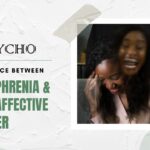Depression and SAD are different mental health issues. Their symptoms, causes, and treatments vary. Understanding these changes helps diagnose and treat these disorders. Depression, also known as Major Depressive Disorder (MDD), is a long-term mood disorder that makes a person feel unhappy, lost, and disinterested in their favorite activities. Depression may make people feel exhausted, guilty, worthless, and even suicidal. Depression isn’t seasonal. Any time. Genetic, biochemical, environmental, and emotional causes are conceivable. Treatment may involve psychotherapy, medication, or both.
SAD is seasonal sadness. Fall and winter are when it happens most. Depressed mood, lethargy, and changes in eating and sleeping are symptoms of SAD. SAD, however, is seasonal. Winter’s lack of sunlight may disrupt the body’s circadian rhythm and neurotransmitters, causing SAD. Counseling, medicine, and light therapy are common SAD treatments.
Sadness and SAD have different causes. Depression is not seasonal, but SAD is. Symptom duration varies. If untreated, depression can endure weeks, months, or years, although SAD symptoms normally return every year and disappear as spring arrives. Sadness and SAD can coexist. Sad people may have SAD-like symptoms throughout particular seasons. A mental health worker must thoroughly review to diagnose and treat correctly.
In conclusion, sorrow and Seasonal Affective Disorder are separate mental health issues. SAD is seasonal and caused by reduced daylight. Both involve mood and behavioral changes. Understanding these disparities helps doctors detect and treat these illnesses, improving mental health over time.
Also Read: Psychology Study Notes, Jobs, Community & More | I Love Psycho
|
S.No. |
Aspect |
Depression |
Seasonal Affective Disorder (SAD) |
|
1. |
Core Symptoms |
Depressed mood, loss of interest or pleasure |
Depressive symptoms occur seasonally |
|
2. |
Duration |
Can persist for months |
Typically occurs during specific seasons |
|
3. |
Triggers |
Can be triggered by various factors |
Triggered by changes in seasons |
|
4. |
Seasonal Pattern |
Not specifically tied to seasons |
Symptoms are tied to specific times of year |
|
5. |
Melancholic Features |
Can have melancholic features |
Not a defining feature |
|
6. |
Sleep Disturbances |
Can include insomnia or hypersomnia |
Increased need for sleep in winter |
|
7. |
Appetite Changes |
Often appetite loss or overeating |
Carbohydrate cravings in winter |
|
8. |
Energy Levels |
Often low energy or fatigue |
Lethargy and low energy in winter |
|
9. |
Anhedonia |
Loss of interest or pleasure |
Loss of interest during specific seasons |
|
10. |
Psychomotor Changes |
Can be slowed or agitated psychomotor behavior |
Psychomotor agitation or slowing |
|
11. |
Suicidal Thoughts |
Can be present |
Can be present |
|
12. |
Social Withdrawal |
Common due to lack of interest |
May experience social withdrawal |
|
13. |
Neurovegetative Symptoms |
Changes in sleep, appetite, energy |
Increased sleep and appetite in winter |
|
14. |
Treatment Approaches |
Psychotherapy, medications |
Light therapy, psychotherapy, medication |
|
15. |
Seasonal Influence |
Symptoms not influenced by seasons |
Symptoms influenced by seasonal changes |
|
16. |
Circadian Rhythm Disruption |
Can lead to changes in sleep-wake cycle |
Linked to disturbances in circadian rhythm |
|
17. |
Onset |
Can occur at any time of the year |
Onset and remission occur seasonally |
|
18. |
Environmental Influence |
Can be triggered by life events or stressors |
Often triggered by reduced sunlight |
|
19. |
Motivation Levels |
Often low motivation |
Decreased motivation during specific seasons |
|
20. |
Intensity |
Severity can vary |
Symptoms tend to be less severe than depression |
|
21. |
Physical Symptoms |
Physical symptoms often accompany depression |
Seasonal changes in sleep, appetite, energy |
|
22. |
Cognitive Symptoms |
Negative thoughts, poor concentration |
Cognitive symptoms may be similar to depression |
|
23. |
Diagnostic Criteria |
Broad criteria for diagnosis |
Seasonal pattern is a key criterion |
|
24. |
Onset and Remission Patterns |
Not tied to specific times of year |
Onset and remission based on seasons |
|
25. |
Psychological Factors |
Negative self-perception, guilt, worthlessness |
Negative mood influenced by seasons |
|
26. |
Social Interaction |
Often reduced due to lack of interest |
Social withdrawal may occur |
|
27. |
Agitation or Retardation |
Can include psychomotor agitation or slowing |
Psychomotor changes may occur |
|
28. |
Sleep and Wake Patterns |
Increased sleep duration in specific seasons |
|
|
29. |
Treatment Response |
May respond to antidepressants |
Light therapy often effective |
|
30. |
Recurrence Risk |
Can recur at any time |
Recurs seasonally |
|
31. |
Cognitive Behavioral Patterns |
Negative cognitive patterns |
Seasonal changes in cognitive patterns |
|
32. |
Response to Positive Events |
Difficulty experiencing pleasure |
May experience more pleasure in spring/summer |
|
33. |
Core Focus of Treatment |
Addressing negative mood and cognition |
Alleviating depressive symptoms linked to seasons |
|
34. |
Feelings of Hopelessness |
Often present |
May be heightened during specific seasons |
|
35. |
Weather Influence |
No direct correlation with weather |
Linked to reduced sunlight exposure |
|
36. |
Treatment Approaches |
Medications, therapy |
Light therapy, psychotherapy, medication |
|
37. |
Impact on Daily Life |
Can impair daily functioning |
Impairs functioning during specific seasons |
|
38. |
Family and Social Relationships |
Often strained due to emotional symptoms |
Social interactions impacted by mood |
|
39. |
Cognitive Distortions |
Negative cognitive patterns |
Cognitive distortions related to seasons |
|
40. |
Thoughts of Death or Suicide |
Can occur |
Can occur |
|
41. |
Emotional Dysregulation |
Present, often tied to negative mood |
Emotional changes linked to seasons |
|
42. |
Suicidal Intent |
Can be present |
Can be present |
Also Read: 28 Difference Between Schizoaffective Disorder and Dysthymia
Frequently Asked Questions (FAQs)
Q.1 What is the main difference between depression and Seasonal Affective Disorder (SAD)?
Depression causes continuous unhappiness, pessimism, and loss of interest in activities. It happens year-round. Seasonal Affective Disorder (SAD) is a kind of depression that occurs in fall and winter when daylight hours are shorter. Spring and sunshine alleviate SAD.
Q.2 What are the common symptoms of depression and SAD?
Depression and SAD share poor mood, exhaustion, eating changes, and sleep disturbances. SAD is generally marked by a hunger for food and weight gain, unlike ordinary depression. Both can cause suicidal thoughts and worthlessness.
Q.3 How are depression and SAD treated?
Depression and SAD therapy may differ somewhat. Psychotherapy, medicine, or both can treat both disorders. SAD responds favorably to light treatment, which simulates natural sunlight. Antidepressants can also treat symptoms.
Q.4 Can depression and SAD coexist?
Depression and SAD can coexist. Some depressed people suffer SAD-like symptoms throughout certain seasons. A mental health expert must evaluate to distinguish the two and develop an effective treatment strategy.
Q.5 Are there any preventive measures for SAD?
SAD can be mitigated, but not always prevented. Even in winter, sunshine is useful. Regular exercise and a balanced diet can help regulate mood. Light treatment in early fall may aid SAD sufferers.









